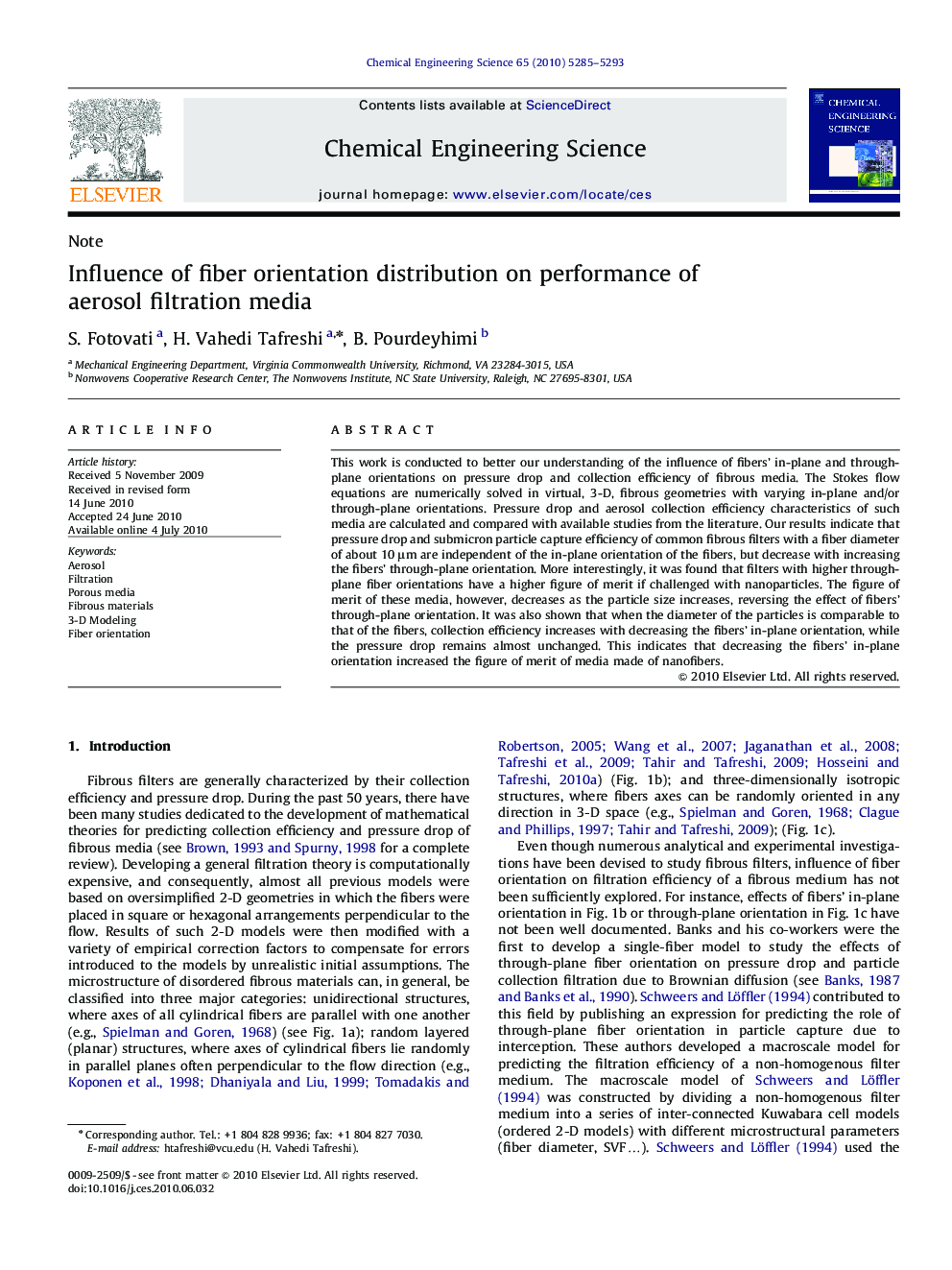| Article ID | Journal | Published Year | Pages | File Type |
|---|---|---|---|---|
| 157033 | Chemical Engineering Science | 2010 | 9 Pages |
This work is conducted to better our understanding of the influence of fibers’ in-plane and through-plane orientations on pressure drop and collection efficiency of fibrous media. The Stokes flow equations are numerically solved in virtual, 3-D, fibrous geometries with varying in-plane and/or through-plane orientations. Pressure drop and aerosol collection efficiency characteristics of such media are calculated and compared with available studies from the literature. Our results indicate that pressure drop and submicron particle capture efficiency of common fibrous filters with a fiber diameter of about 10 μm are independent of the in-plane orientation of the fibers, but decrease with increasing the fibers’ through-plane orientation. More interestingly, it was found that filters with higher through-plane fiber orientations have a higher figure of merit if challenged with nanoparticles. The figure of merit of these media, however, decreases as the particle size increases, reversing the effect of fibers’ through-plane orientation. It was also shown that when the diameter of the particles is comparable to that of the fibers, collection efficiency increases with decreasing the fibers’ in-plane orientation, while the pressure drop remains almost unchanged. This indicates that decreasing the fibers’ in-plane orientation increased the figure of merit of media made of nanofibers.
